Contents:
Introduction
News blog
What is Servoy?
Getting Started
Comparison Servoy/VFP
Performance
How-To's
Code Reference
VFP2Servoy Toolkit
Contact / feedback
|
How to use Styles
Styles and cascading stylesheets are completely new to most VFP developers as a means to enhance
their average windows application. We are pretty used to OOP and inheritance but the use of
CSS (Cascading Style Sheets) offers a whole new dimension and very flexible possibilities to
seperate look and feel from layout.
Servoy actually supports three ways to change the style (appearance) of a solution:
- Look And Feel (LAF)
- Skins
- Servoy styles
Look And Feel (LAF)
This feature allows your client to change the default Look And Feel of the application
comparable to the way you can change the default look and feel of your OS. The client can change this
by choosing a look and feel from the preferences menu. You can even create your own look and feel schema.
If you want to do this then you will find more information in the User Guide.
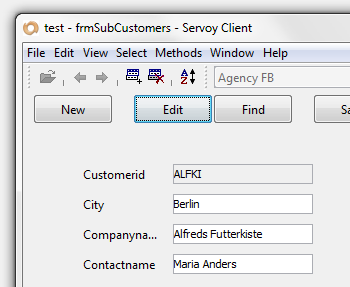
Default LAF
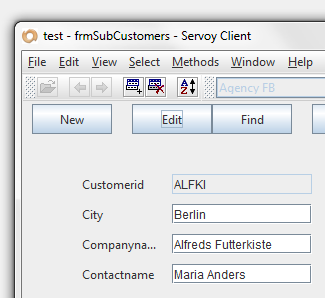
Metal LAF
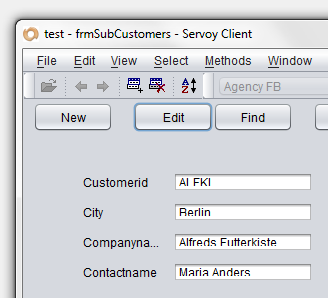
Nimbus LAF
Skins
A Skin is basically a zipfile with elements to enhance the graphical user interface (GUI) very
similar to the way Look And Feel styles are applied.There are also out-of-the-box third-party styles that you
can buy. I saw an impressive presentation by Centigrade
at Servoy World 2011 of their interface enhancement products. For a lot of endusers an application is only as
good as it looks...
Servoy styles
A Servoy style is an HTML cascading style sheet (CSS) - a textfile containing style definitions. You can share styles
between solutions, apply styles to one or more forms or apply styles to one or more form elements.
In the samples a solution has been included to demonstrate styles. To see the effect of styles do the following:
- Activate the servoy_sample_styles solution
- Start the smart-client or the web-client
- Change the style to see the effect
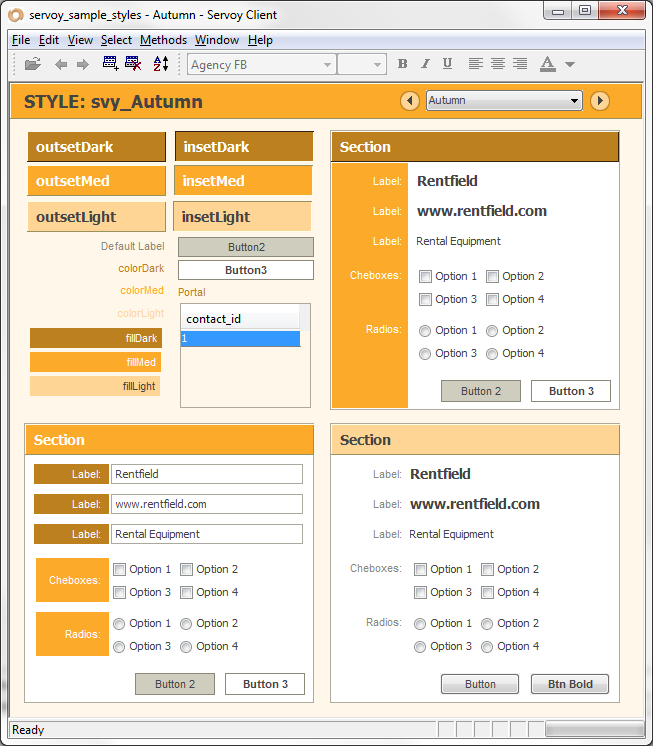
Style svy_Autumn
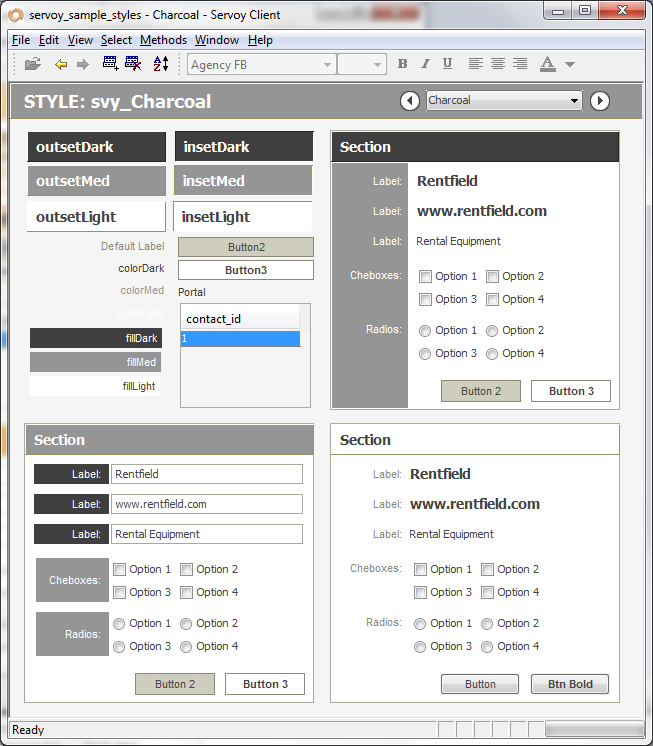
Style svy_Charcoal
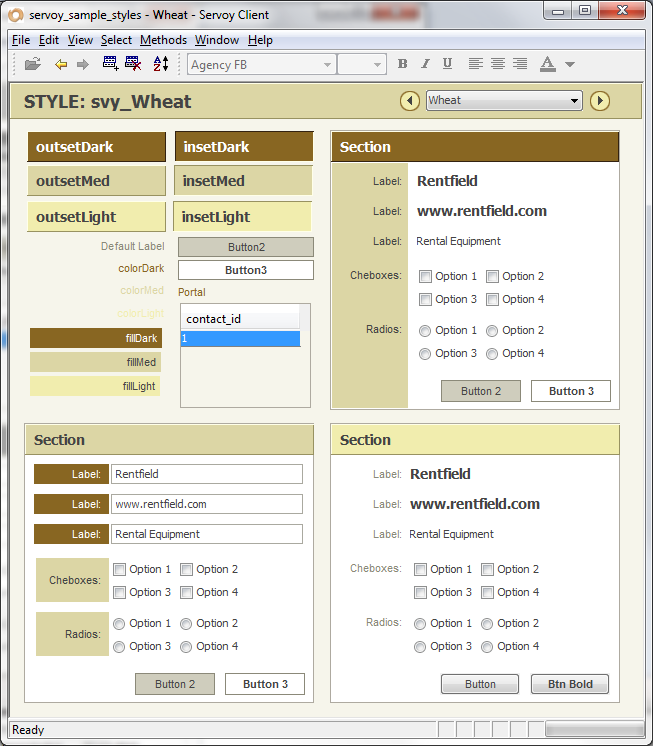
Style svy_Wheat
For those of you who are unfamiliar with cascading style sheets (CSS), see the example below.
A cascading style sheet consists of a textfile with an HTML markup-language that describes what
style to use on user-interface elements of a certain type.
By default the styles are located in the servoy_localhost_resources folder of the
servoy_workspace folder. When you look inside the svy_Autumn.css file you will see blocks
of code where each block contains markup code for a specific object such as label, button, form,
tabpanel, field, field.border, field.noborder etc.
While these design features are applied by
default they can be overridden at the form or element level.
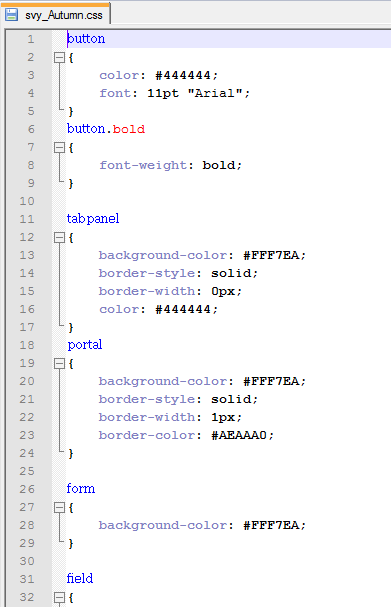
Style sheet svy_Autumn
To create your own servoy style sheet do the following:
- In the Solution Explorer locate the Styles folder
- Right-click the Styles folder and select Create new style
- Make sure the checkbox to add sample content is checked
- Modify the generated style sheet to suit your needs
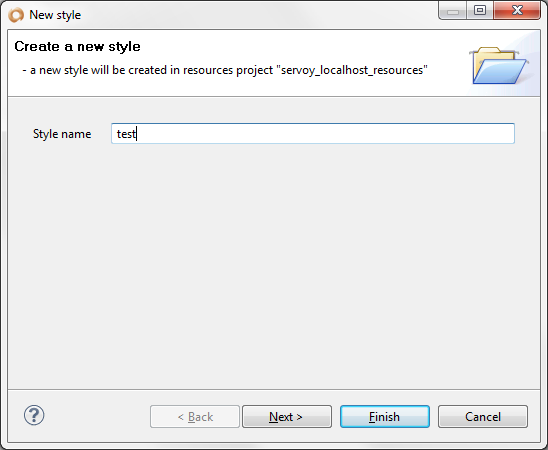
Create new style dialog
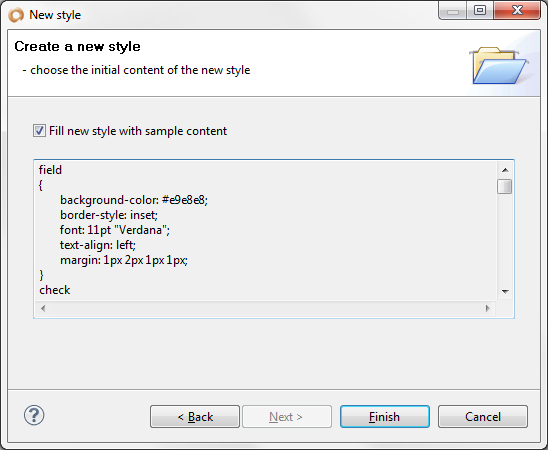
Check select sample style content
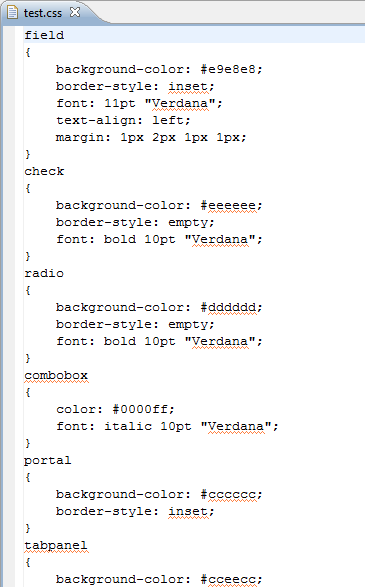
Style sheet editor
If you want to know more about creating cascading style sheets take a look at W3Schools.com
|
External resources:
 vfp plugin vfp plugin
 ServoyWorld 2012 pics ServoyWorld 2012 pics
 Official Servoy website Official Servoy website
 Ken Levy on Servoy Ken Levy on Servoy
 Servoy info Servoy info
 Servoy Forum Servoy Forum
 Servoy Documentation Servoy Documentation
|